I Heart Second Sight…
by Edward
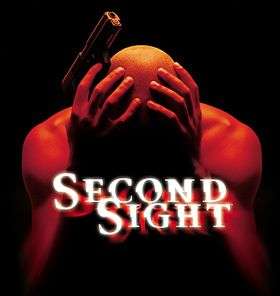 When Free Radical Design closed their doors, it was one of the first major gaming casualties of the recession. Created by former members of Rare, and taking their experiences from Goldeneye 007 and Perfect Dark, Free Radical made their name from the Timesplitters franchise. The games were First Person Shooters which involved you travelling to different time periods and locations in order to gather time crystals and put history right. With a great premise, incredible multi-player and an arcade mode filled with utterly loony scenarios, the Timesplitters games, as detailed here by Adam, were some of the most refreshing FPS titles with which you could acquaint yourself in the last console generation. However, as much as I could wax lyrical about the series for this “I Heart…” there is, in fact, a different game by Free Radical that was released in 2004, and which helped utterly cement my love for the developers; it still stands as one of my all-time favourite games. That game is Second Sight.
When Free Radical Design closed their doors, it was one of the first major gaming casualties of the recession. Created by former members of Rare, and taking their experiences from Goldeneye 007 and Perfect Dark, Free Radical made their name from the Timesplitters franchise. The games were First Person Shooters which involved you travelling to different time periods and locations in order to gather time crystals and put history right. With a great premise, incredible multi-player and an arcade mode filled with utterly loony scenarios, the Timesplitters games, as detailed here by Adam, were some of the most refreshing FPS titles with which you could acquaint yourself in the last console generation. However, as much as I could wax lyrical about the series for this “I Heart…” there is, in fact, a different game by Free Radical that was released in 2004, and which helped utterly cement my love for the developers; it still stands as one of my all-time favourite games. That game is Second Sight.
Second Sight starts from a first-person perspective as your protagonist is wheeled through a hospital, complete with blurry vision and echoing voices as the guards pushing you talk about you until a doctor finally injects you with a sedative. The next moment you see your character from a third-person perspective waking up from a hospital bed before he suddenly floats up and breaks out of the bindings securing him to the bed. Patient JV-034′s first words are “Why can’t I remember anything?”, before unfastening the lock on the other side of the door and walking out of his ward, whereupon a large blue field envelops and heals him. The plot device of having amnesia is an all-too common one in videogames, but having psychic powers? That was a new one for me when I bought the game. The first level, despite being quick, simple and solely involving you grabbing a key card to get to the elevator in order to escape the facility you’re locked in is one of the most memorable opening scenes for any game I’ve played and, despite the potential cliché path in the amnesia plot, Second Sight also has one of my favourite stories in any videogame I’ve had the fortune of playing.
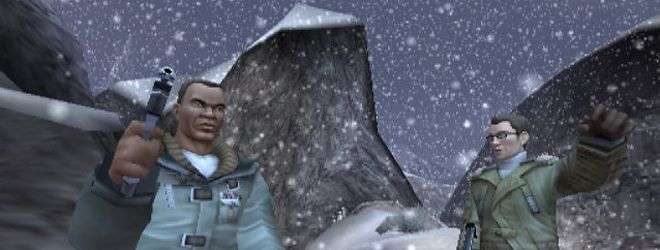
Avoiding spoilers as much as possible, Patient JV-034 turns out to be John Vaatic, an MIT Parapsychology Researcher who was taken on a mission to Siberia for six months with a US Marine squad known as WinterICE, but has woken up in a medical facility broken, bruised, without his team-mates and with psychic powers. While trying to escape the facility you’re being kept in and to find some answers, you’ll flashback to the WinterICE mission as you regain your memory, meaning that the gameplay will take place in two different time periods as John Vaatic discovers more about what happened to him. Throughout the game will be stark revelations, meaningful bonds attached to different characters and an amazing shock twist that helps cement both the story and the experience as one of the more memorable journeys in a game that I can think of.
The WinterICE levels start out at a stark contrast with the ones six months later, as John goes from a researcher gunning it with Marines to a broken and confused man, sneaking around to avoid capture, which helps to vary the gameplay so that you rarely feel like you’re doing the same thing over and over. When shooting, Second Sight makes it a lot more fun than many other games, with one of the best targeting systems around that I didn’t see again until Grand Theft Auto 4. When aiming at an enemy, you can either go for a general body shot (strongly flicking the right analogue would allow you to swap targets), or by lightly moving the stick you could aim for specific parts of the body, which would then deal damage to that area. Shooting them in the legs made them limp, shooting them in the head obviously killed them instantly, and shooting them in the nuts would be something you’d do for fun, just because you could.
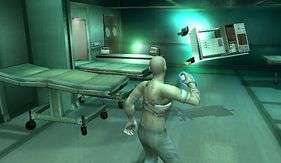 You could also combine this with psychic powers, so once your telekinesis power upgrades halfway through the game to let you pick up living people, you were able to lift them up and render them helpless before tranquillising or using them as grim target practice. It was genuinely one of the most refreshing targeting systems I’d used in a game and made any section involving shooting far more enjoyable and interesting, especially as all of the weapons felt distinctively different and had enough variety that deciding what to use in each situation felt like it actually mattered instead of being just another killing tool.
You could also combine this with psychic powers, so once your telekinesis power upgrades halfway through the game to let you pick up living people, you were able to lift them up and render them helpless before tranquillising or using them as grim target practice. It was genuinely one of the most refreshing targeting systems I’d used in a game and made any section involving shooting far more enjoyable and interesting, especially as all of the weapons felt distinctively different and had enough variety that deciding what to use in each situation felt like it actually mattered instead of being just another killing tool.
The psychic powers John develops throughout the game will become one of your most valuable tools should you allow yourself to take full advantage of them. Telekinesis allows you to trigger switches, locks and objects that’d previously be inaccessible, allow you to move objects around and, later on, pick up and throw living people, rather than their corpses. Trust me, as soon as you unlock it, you’ll be hurling people against walls and into their friends as well. Then there’s healing, which renders you immobile and slowly restores your health in a loud blue aura, and the psychic blast that allows you to fling a ball of energy at a foe, throwing them about ragdoll-style, which later upgrades to a large blast that instantly, albeit temporarily, incapacitates any enemies caught in its radius. Charm allows you to calm people down and make yourself invisible, but doesn’t work if they already know you’re there or if they’re a security camera.
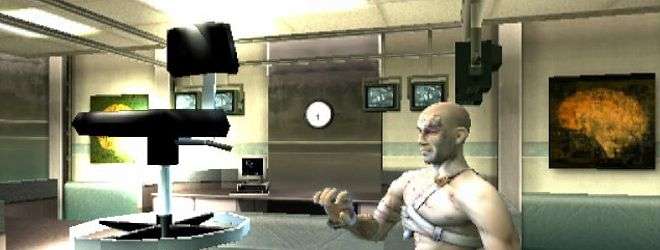
The projection power allows you to transmit a spectral version of yourself to move through otherwise inaccessible areas to hit switches, discover passwords and the like; this skill upgrades later in the game, allowing you to possess the bodies of other people, meaning that you can perform tasks your projected self would be unable to do before. The psychic powers are an integral part of the game and mastery of them will become second nature as you progress. Don’t expect to just use them one after the other though, as they’ll drain your psychic meter for as long as you’re engaging them (except the psychic blasts which use up nearly all of the energy) and take time to regenerate too, forcing you to think about what powers you’re going to use before you use them.
The stealth was also surprisingly deep and robust and had clearly learned a lot of lessons from the Metal Gear games. Walking over dead enemies would leave blood-prints on the floor for a few steps, making it easier for the foes to track you if you weren’t careful, or you could hide the bodies away and delay your discovery. Guards would look in lockers for you if they thought you were in the area, and there were always multiple ways to stealth your way through, so if you messed up, it felt like your fault rather than the game being overly difficult or messing you over. Maybe you should have snuck up behind him and taken him out in one blow? Maybe you could have tranquillised him instead of killing him and snuck past while he was unconscious, or maybe you could have charmed your way past him and got through without any bloodshed at all?
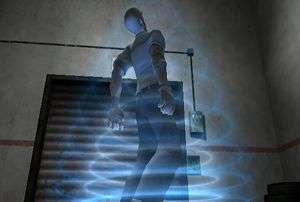 Second Sight is a thinking man’s game. With the combination of stealth, shooting and psychic powers, there are so many different ways to take on each level. Take the examples mentioned in the above paragraph, those were three stealthy options that could have been taken: one involving weapons, one involving a psychic power and one requiring neither. There’s so much potential for variety that it feels like a game which encourages and rewards experimentation rather than having just one set path. You can use the environment around you to your advantage and even peek through doors, opting to use a gun (or your powers) through the crack.
Second Sight is a thinking man’s game. With the combination of stealth, shooting and psychic powers, there are so many different ways to take on each level. Take the examples mentioned in the above paragraph, those were three stealthy options that could have been taken: one involving weapons, one involving a psychic power and one requiring neither. There’s so much potential for variety that it feels like a game which encourages and rewards experimentation rather than having just one set path. You can use the environment around you to your advantage and even peek through doors, opting to use a gun (or your powers) through the crack.
Your character is also able to use computers (provided you know the passwords) to get map schematics, find useful information that can provide another path through the level, and even alter the security systems if you really wish. And, of course, nothing’s stopping you from just going guns blazing through a level, though it’s not entirely recommended in those taking place after the WinterICE operation, as the enemies will tend to accumulate and make it the more difficult choice.
The variety of options you can take throughout the game is also reflected in the level designs, with each one allowing and encouraging you to experiment. Take my favourite level in the game: “Madness”. In his quest to find answers, John Vaatic finds himself sneaking through a mental asylum, filled with guards, patients and doctors. Not only is the atmosphere incredible, bolstered by the amazing soundtrack which accompanies the game (and was freely available on the website before the company closed doors), but you genuinely feel tense throughout. It is during this level that you unlock the ability to pick up people while they’re living, and so immediately you’re given a new way to deal with any enemies who cross your path. Despite the level design appearing narrow, there are many ways through. You can knock out the guards and search their books for the password to the computer and unlocking the door you need to get out, or you could simply sneak past them all.
Later, you could sneak through vents rather than face an enemy, either creep down the giant stairwell and hide from the guard or simply pick him up and throw him to the bottom, freaking out the others below. Making your way to the bottom, do you then hold up the guards and freak them out, or do you start using telekinesis on the bound patients (or otherwise tranquillise them) so that the doctors rush over and devote their attention to them while you run past? Or do you simply kill the doctors and mess with the patients for the sick perverted fun of it? What next? Sneak through the corridor or risk the rooms with the mental patients who are given free roam of their own space and who will attack you? Memories of this level alone were enough to make me want to write an entire article about my love for the game, as everything that encapsulates my love for Second Sight is perfectly represented in just “Madness” alone.
It isn’t just the gameplay and levels, but all the little details which help broadcast how much love Free Radical put into the game. Early on, upon discovering your psychic blast, you take out a guard typing on a computer. Looking at the screen you can see he was talking to his wife, and the longer you read, the more and more worried she gets and you might actually feel pangs of guilt for something you’ve done – something games like this can rarely make you experience, especially as it’s optional to look at. Then there’re the emails that workers send to each other which can contain loads of little nuggets of humour, and trying to hack into a computer without knowing the password was always great for a laugh, especially as your attempts get more desperate until John is forced to type that he doesn’t actually know the password; there are many of these little touches scattered throughout the game for those who seek to discover them. Second Sight also boasts cumulative stats; these gather all of the details of your time spent on the game, and tell you exactly how you’ve been playing, even highlighting what kind of player you are and what options you tend to take, which I thought was a great touch.
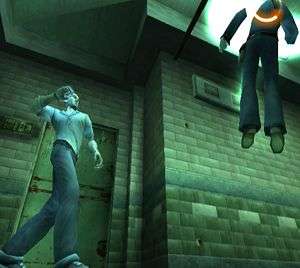 Take the hypothetical scenario I’m about to give you as my final word on what I still truly believe to be one of the greatest games I have ever played. You’re about to enter a room where there are a few guards and you need to get through. Immediately, several methods spring to mind: you could peek through the door and shoot the guards you can see, while preparing for a gunfight with the rest, burst in with guns blazing and take them all out, sneak in quietly and shoot them, or stealthily take them out one by one. At the start of the game, you could throw things around and into your opponents until they ran away or died from an inanimate object attack; earlier on you’d think of picking up them up one by one and throwing them against the walls until they died, psychic blast them and wait for your meter to slowly recharge to plan the next part of your attack, or run through and hope the charm power lasts the distance.
Take the hypothetical scenario I’m about to give you as my final word on what I still truly believe to be one of the greatest games I have ever played. You’re about to enter a room where there are a few guards and you need to get through. Immediately, several methods spring to mind: you could peek through the door and shoot the guards you can see, while preparing for a gunfight with the rest, burst in with guns blazing and take them all out, sneak in quietly and shoot them, or stealthily take them out one by one. At the start of the game, you could throw things around and into your opponents until they ran away or died from an inanimate object attack; earlier on you’d think of picking up them up one by one and throwing them against the walls until they died, psychic blast them and wait for your meter to slowly recharge to plan the next part of your attack, or run through and hope the charm power lasts the distance.
You could take your new ability to enter people’s bodies and use it to kill one of the guards, turning the other on the one you’ve possessed, then stop projecting and leave them to take each other out, or you could mix up every one of those scenarios, every time. Each way could potentially be a right way and helps Second Sight to feel fresh and challenging and, even after all these years, it still comes across as one of the most innovative, creative and memorable games created by a studio who put all their love into it.
Last five articles by Edward
- Best of 2015: Journey's End: A New Beginning
- Journey's End: A New Beginning
- You Can't Choose Your Happy Ending
- Okay, Let's Fix Comedy In Games - The V-Effekt
- Time Keeps On Smashing Away














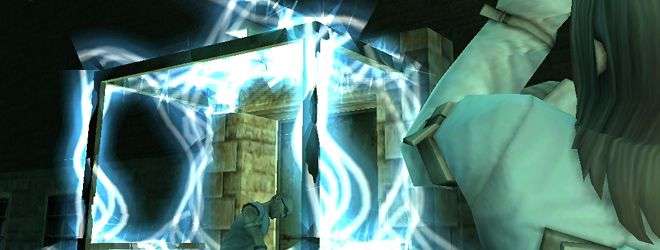





Ah! I remember this. I think I even played it. Was it a lot like Psi-Ops? I think it was. In fact, possibly my missus played this. And some terrible game that was similar but you were a prisoner and had to break out of jail.
ARGH…. the sixth gen of consoles was so muddy.
Games that let you possess people are good. See: Blood Omen and Messiah.
Good read. I’ve killed minutes of my work day with it.
I’m afraid this game completely passed me by. It sounds awesome though. It reminds me abit of metal gear solid but instead of Snake you play as Pyscho Mantis!
I feel bad for never having played this now.
Second sight was awesome, after coming down from the Timesplitters high I was on at the time Second sight more than filled that empty TS space I had eventhough it was a serious game. A game I must somehow get a copy of and pray that it plays on my 360.
Aweseom article Ed
I’d never even heard of this game until now, presumably because by 2004 I’d moved off PC gaming and on to the XBox but still wasn’t THAT keen on console gaming so I only ended up with the handful of games that I bought at the same time as buying the XBox itself. It sounds interesting, and probably interesting enough that I’d give it a go at some point just to see if it pulls me in as much as I think it would, from how you’ve described it.
It’s always good for me to find out about kick-ass games that have slipped under my radar!
I’m also in the ‘it slipped under my radar’ camp, I’m afraid but it actually sounds pretty good. For some reason, when I was reading it, it reminded me of Hitman – perhaps it was the fact that you can go in guns blazing and take everyone out, or you can opt for a more stealthy option, by sneaking around and utilising your other abilities/items. I love games that give a choice on how you complete a mission; they allow you to construct your own approach from a variety of methods and for me, along with a good story, that is one of my key loves in a game.
@Lee
You played some of it :p
Really great nostalgia trip Ed. Second sight was so overlooked it was unreal, it came out at a rough time of year really when everyone was still saving up for the Winter schedule and Midway were really pushing the boat out on Psi-Ops marketing which drowned Codemasters own publishing efforts.
I loved the feel of the game, the narrative was superb and the Free Radical Humour was top class as ever, more subtle than TS but definitely still there.
Thankyou Ed
I loved this game. It felt so original at the time. Didn’t they leave it open for a sequel?
Never played or heard of this game! But this is partially why I like the “I Heart” series, gives me a glimpse of games that totally passed me by!
I don’t remember much about te game but I did play it and I know I enjoyed it at the time however I did prefer Psi Ops.
Apart from Star Wars games with Jedi powers, the closest to this type of game I have played in recent years would be Infamous.
@Author – I know Psi Ops left itself open to a sequel but nothing more happened with it.